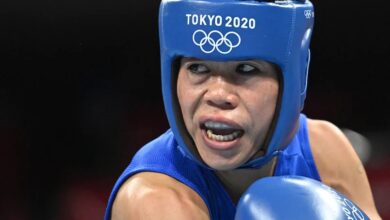Shabnim, whoa, give a bow
Shabnim Ismail bowled a ball last week that registered on the speed gun at 132.1 km/h (82.1 mph). Shabnim would have been limited to the kitchen in a different era, or in a different nation during our time, making curry—something she really enjoys doing.

Though Shabnim was South African, she was able to break through the barriers erected by her culture, sexism, patriarchy, and religion. For a considerable amount of time, the 35-year-old was regarded as the quickest bowler in women’s cricket. When Shabnim, who is 5 feet 4 inches tall, is given a cricket ball, she turns into a true horror.
She became the first female bowler to surpass the 80 mph threshold last year, and this week she delivered the fastest ball ever recorded in women’s cricket. Most people probably won’t find this to be very rapid; in fact, it would be more like the slower deliveries of somebody like Brett Lee or Shoaib Akhtar.
It goes without saying that males are stronger than women and that women will never be able to bowl as quickly as men. The reasons for this include hormones, bone density, muscular mass, and the size of the heart and lungs.
The importance of Shabnim’s achievement, however, becomes clear when you look at women’s cricket from a less narrow-minded and maybe less sexist perspective. For women fast bowlers, reaching the 80 mph barrier has long been seen as the holy grail—tasty but unachievable. Athletes hold the notion of setting a personal best in high regard; yet, those of us who have become comfortable in our mediocrity are unfamiliar with this idea.
Shabnim, who had a difficult upbringing in a South Africa trying to move away from apartheid and toward some form of equality, is now a global inspiration for young females who want to play fast bowling.
Even while sport may not have many intrinsic benefits, it may be the most obvious and successful way to provide young females with positive role models. This is particularly important in areas where gender inequality is rampant, such as South Asia.
Shabnim is now competing for the Mumbai Indians in the Women’s Premier League, the women’s division of the Indian Premier League Twenty20. The South African is adamant about continuing to be a very quick lady even after retiring from international cricket last year. Shabnim said, “People say you lose speed as you age, but I don’t believe in that at all.”
A 35-year-old semi-retired athlete should inspire everyone by setting a personal and international record.
T20 discussion
Which leads us to the contribution T20 cricket makes to women’s cricket. Most male cricket players see it as an enticing diversion that might hurt their skills; purists view it as a Faustian deal in men’s sport, where players pursue wealth at the expense of their skills and the reputation of Test cricket.
However, it’s a huge benefit for the women, who play hardly little Test cricket. Women all over the globe have been hoping the BCCI would launch an IPL-style women’s competition. English fast bowler Kate Cross stated in December, “It’s a tournament we had been crying for.” “We’d never heard of some of the money Nat Sciver went for in women’s cricket before—320 grand last year.”
At the first-ever WPL auction last year, the Mumbai Indians paid an incredible £320,000 for England’s Nat Sciver-Brunt. She finds herself in a moral bind at this year’s competition since her national team is scheduled to face New Zealand on March 19, two days after the WPL final. She obviously prioritized money before her country, and anybody who holds her accountable for that is being hypocritical.
When asked about her choice, she said, “Yeah, I mean, I would be lying if I said no.” “Yeah, everything was taken into account, especially after going for so much in the first year. I hope that this club vs. nation debate never comes up again. I am aware that it has happened in the past and will continue to happen with the men’s side of things.
The BCCI’s financial might forged the Faustian pact, but now it alerts India’s best players to the “cause for concern” presented by the “trend” of giving the IPL precedence over local cricket!
Due to their evident disinterest in playing domestic or Test cricket, Shreyas Iyer and Ishan Kishan were not awarded yearly contracts by the BCCI last month. A player’s desire to represent India might be influenced by their job security in the IPL.
Regarding Shabnim, as well as Indian cricket players like Saika Ishaque, Renuka Thakur, Radha Yadav, and Jasia Akhtar, the WPL is assisting them in making history and becoming role models.
This journalist questioned a Pakistani coach preparing the men’s squad for the 2014 Asian Games in Incheon, South Korea, on why Iran had a women’s kabaddi team but not Pakistan. “Sports should not include women. Furthermore, Iranians aren’t even true Muslims, he said.
This coach seemed to be less than nice to Iranians (for being Shia) and ladies (for being women), while being humble and amiable in every other way and completely devoid of hatred. These are the mental barriers that female role models like Shabnim, Indian cricketers, and other athletes are assisting in shattering.






